Has your website’s search engine ranking been underwhelming despite pouring your heart into crafting exceptional content? If so you’re not alone!
As a site owner or blogger, climbing the search engine ranks is crucial for your online success. The secret ingredient to make this happen? On page SEO.
Implementing top-notch strategies for optimizing your website’s content and structure will elevate its ranking, giving it the visibility it deserves.
In an article posted on his website, Romain Brabant (founder of SEO Buddy) defines on page SEO thus:
“On page SEO is the process of making and optimizing the content on your web pages so that it appeals to both search engines and users. In this context, content refers mainly to the site’s formatting, images, and written content, but not general website coding elements. The text you’re looking at right now is content.”
There are a few key things to keep in mind when optimizing your website’s on-page SEO, and here are two of the most important ones:
- Creating high-quality content that appeals to both search engines and readers will give you a competitive advantage.
- Consider the search intent;create content that aligns with a user’s intention when visiting your site, most often their desired outcome. When considering the information you want to put on the site, a focus keyword can help ensure that what ends up on the site is cohesive, organized, and in line.
Algorithms have indeed evolved, but keywords are still very much relevant for SEO on the page.

Image via Google
Content Optimization
Do you know that there is an ‘easy’ way to boost the performance of your content?
Don’t believe me; take a look at this snippet of an article by Priscilla Tan:
“Content optimization dramatically improves your content’s performance and helps you meet your marketing goals.
Without it, you miss out on visibility, rankings, traffic, leads, and sales.
The challenge is that the optimization techniques that move the needle forward aren’t always obvious.
For instance, optimizing content for SEO vs. conversions requires two different approaches. The former involves keyword research, while the latter involves copywriting and a product-led approach.”
How to optimize content for SEO; Priscilla offers six tips:
- Target a keyword with traffic potential.
- Align it with the search intent.
- Cover everything searchers want to know.
- Make it easy and enticing to read.
- Write a compelling title tag and description.
- Get/attract enough backlinks.
Blog Post Optimization
Do you struggle with making your blog posts SEO-friendly?
Writing blog posts that rank well and provide readers with relevant information is a skill like any other. The more you do it, the better at it you’ll become.
According to Digital Marketing Consultant & Trainer Alex Chris, he writes:
“Despite what many people think, it’s not a complicated process. There are some simple steps to follow to ensure that everything you publish on your website or blog is SEO-friendly.
Things like the title of the post, the structure of a blog, text formatting, headings, and paragraphs are easy to fix and yet play a vital role in rankings.”
Here are ten tips for writing SEO-friendly blog posts
As recommended by Alex in his article:
- Think before you start writing.
- Create the structure of the blog post.
- Craft the title and URL.
- Use headings correctly.
- Keep your paragraphs short.
- Add links when it makes sense.
- Do make use of keywords (but not keyword stuffing).
- Optimize the length of your blog post.
- Optimize your meta description.
- Optimize your images and other media elements.
Landing Page Optimization
Are you struggling to convince your website visitors to take the desired action?
Thanks to Hailey Friedman (CEO of Growth Marketing Pro SEO Agency and Co-Founder of GrowthBar), we have a good description of what landing page optimization is all about;
In short, landing page optimization is a bit more complicated than blog post optimization. You want to lead visitors toward your call to action and do everything you can to ensure they convert.
When creating SEO-rich content, you aim to capture the reader’s attention and engage them for as long as possible. The goal is to keep the answer to the question they came looking for in their minds after they leave your site.
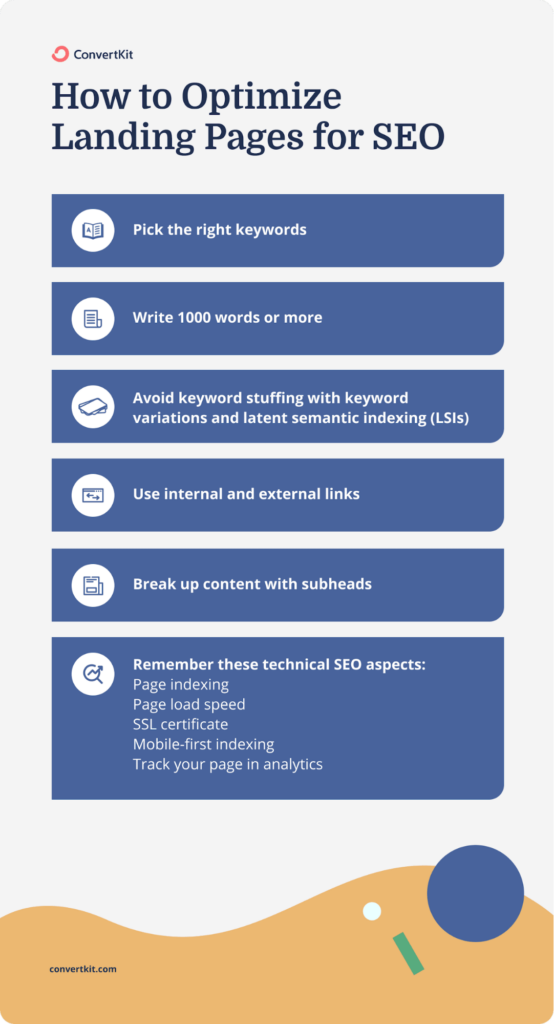
(Source: Convertkit.com)
Long-Tail Keywords
Are you looking for a scalable keyword research strategy?
According to Roberto Popolizio (SEO Consultant & Digital PR), in an article shared on his timeline, we read:
Find Long Tail Keywords On Google
This is the first step in any SEO campaign. We can spend a week talking about different ways to do it, but in the end, it all comes down to understanding what your customer would type in Google’s search engine
The simpler, the better. Start with the most basic search term you can think of. For example, Tenerife is one of Thomas Cook’s most popular holiday destinations, so let’s start with that keyword.
Now, we’re not actively trying to rank here, we’re just trying to get an idea of what sort of content might work while looking into the clues Google is giving us.
First of all, let’s have a look at what Google Autosuggest is showing in the dropdown:
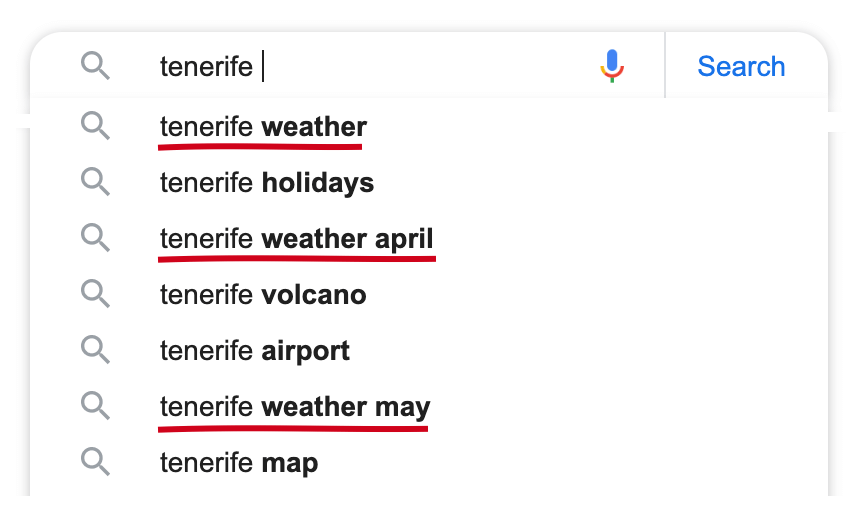
And then the related searches:
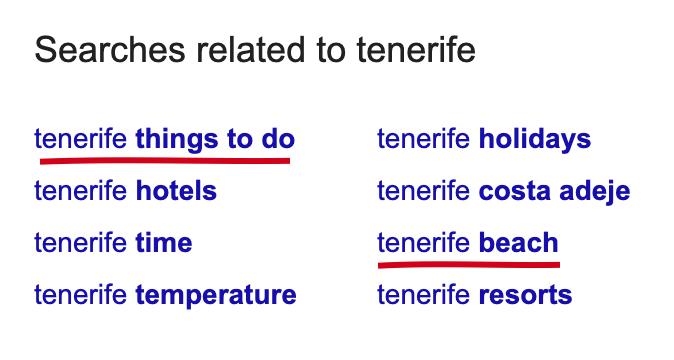
This gives us a list of potential ideas to work with:
- A guide to the top things to do in Tenerife.
- A blog about the best beaches in Tenerife.
- A page about the weather in Tenerife.
Internal Linking
Matt Bertram, Enterprise SEO Consultant at EWR Digital, claims:
“Publishing quality, valuable content on your website regularly is one of the most effective ways to increase your rankings on search engines, build brand awareness and attract quality leads to your website.
Content marketing can help you build trust with people, educate consumers and inform people of your products and services.
To create a foundation of outstanding content, focus on giving your audience what they need. This may include answering common questions, offering unique perspectives on industry-related topics, or crafting engaging pieces that people can’t wait to consume.
Content marketing isn’t limited to blog posts and case studies. You can create everything from e-books and infographics to videos, podcasts, webinars, and other creative pieces to engage your audience.
“Your brand image reflects how your users feel about you.”
Neil Patel, the co-founder of NP Digital, recognizes that to create the best possible brand image, you must consider how your users feel about your business.
They’ll respond much better to a positive experience that is continuously tailored to their needs and expectations.
Image SEO
If you are concerned about your page speed and rankings, Romain Brabant (Founder of SEO Buddy) explains how image SEO can offer immense benefits when leveraged correctly:
“Image SEO is the practice of optimizing website images to help search engines crawl, understand, and index them better. This contributes to your overall SEO efforts and helps boost SERP rankings.
Image SEO can also help your images rank higher in Google image search results.
There are two key goals of image SEO:
- To make your images more discoverable.
- Ensure that images don’t slow down page speed.”
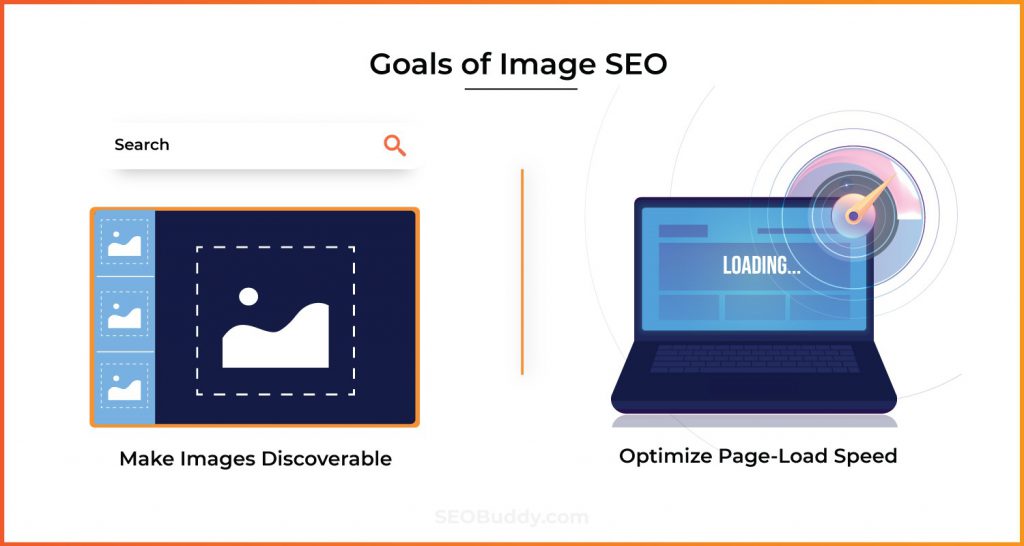
(Source: SEOBuddy.com)
SEO Titles
Does Google keep changing your title links?
The owner of Martini Buster, Roger Montti, offers simple tips to help you avoid changing your title tags.
“Google offers seven best practices for writing title tags that will influence what Google shows in the search results.
- Make sure every page has a title tag.
- Write concise title tags that describe what the web page is about.
- Avoid keyword stuffing.
- Avoid boilerplate that is repeated across the site.
- Branding phrases are okay until they become boilerplate.
- Google sometimes uses what’s in the heading elements in the title links.
- Use the Robots.txt correctly.”
Meta Description
Did you know that unique meta description tags can influence your rankings in search results?
Don’t believe me; take a look at these real-life answers from Google that Roger Montti shares in his article.
Google’s Recommendations On Meta Descriptions
“Google’s documentation of snippets notes that meta descriptions are used to generate search results snippets.
If a meta description is properly used, then the meta description displayed in the search results will communicate to the potential website visitor what the page is about and give them an idea of what to expect if they click the link and visit the website.”
On-Page SEO Tools
If you are looking for a way to dig deeper into your on-page SEO tactics to boost your organic rankings, check out these amazing tools Neha Kaushik suggests in her comprehensive guide;
According to Neha, on-page SEO tools aim to:
- Track SEO strategies.
- Make improvements to simplify getting traffic.
- Fix SEO errors that are affecting the traffic.
- Uncover areas that can help you go a step higher than competitors.
Her top 10 recommendations for on-page SEO tools:
- Serpstat
- Semrush
- PageSpeed Insights
- SERanking
- SEO PowerSuite
- Sitechecker
- Ahrefs
- Seobility
- SEO Tester Online
- Moz”
Closing Thoughts
As we’ve explored throughout this article, on page SEO plays a crucial role in enhancing your website’s visibility and performance. By implementing effective strategies and techniques, you can make significant improvements in search engine rankings and user engagement.
Remember to consistently produce high-quality content that aligns with your audience’s needs and expectations, and always keep on page SEO in mind when updating and optimizing your site. By doing so, you’ll ensure that your website remains an authoritative and valuable resource for your target audience.



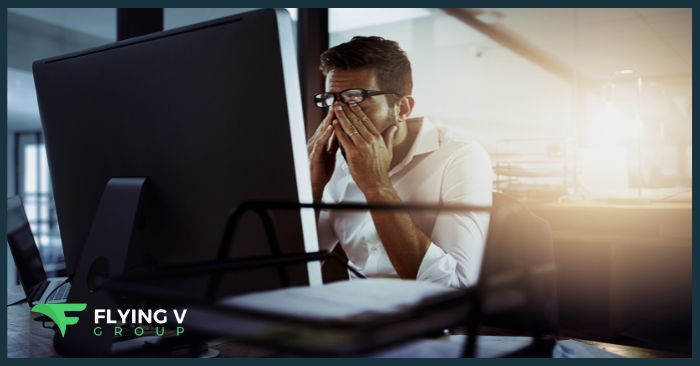


0 Comments